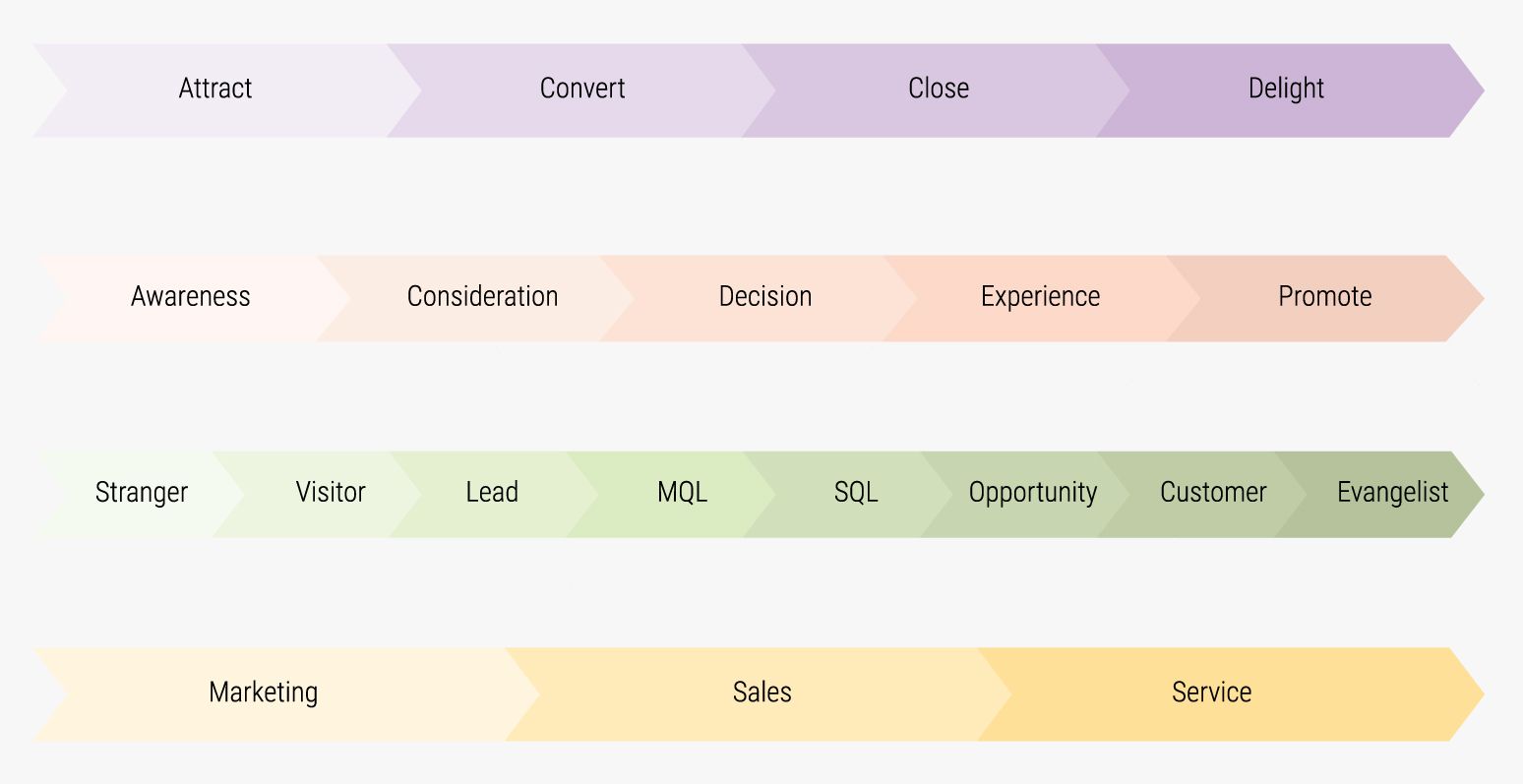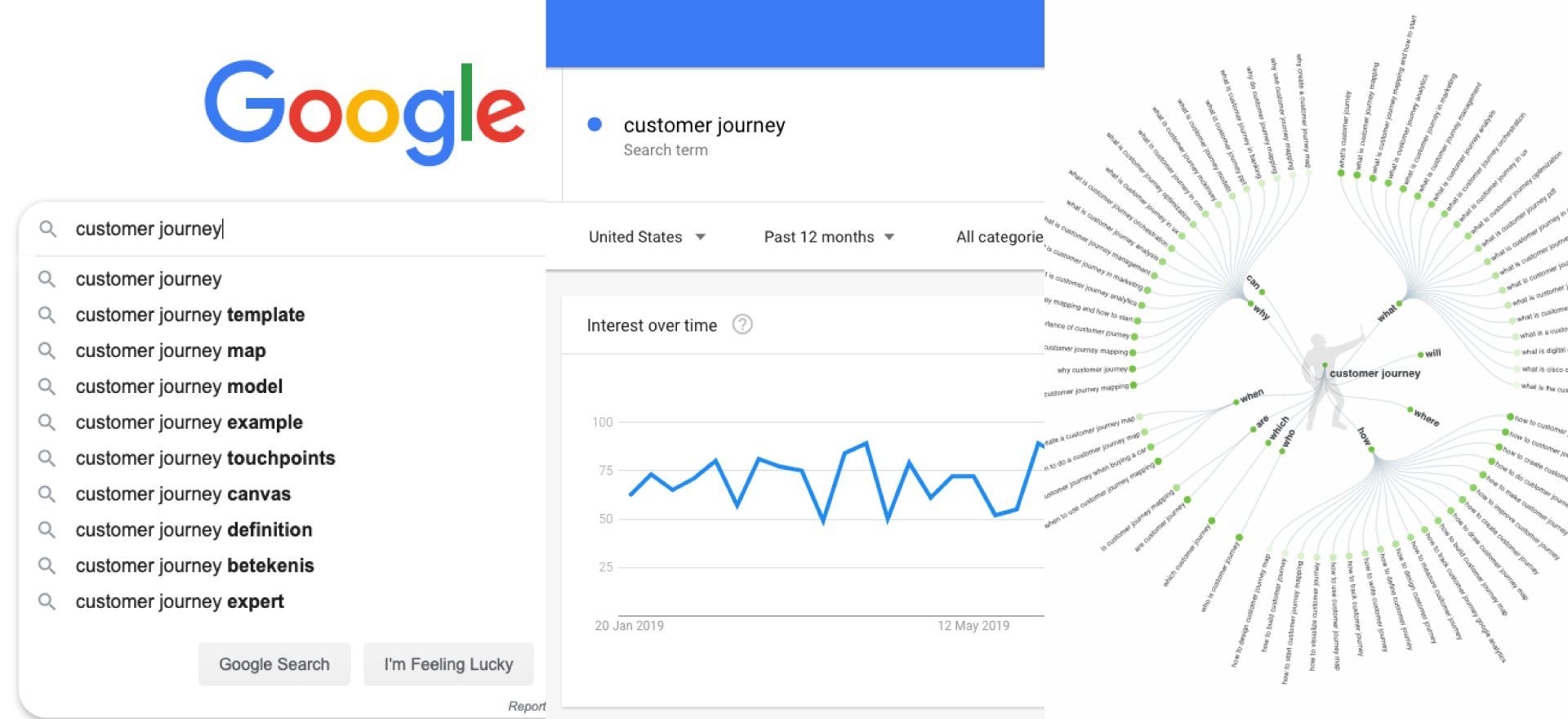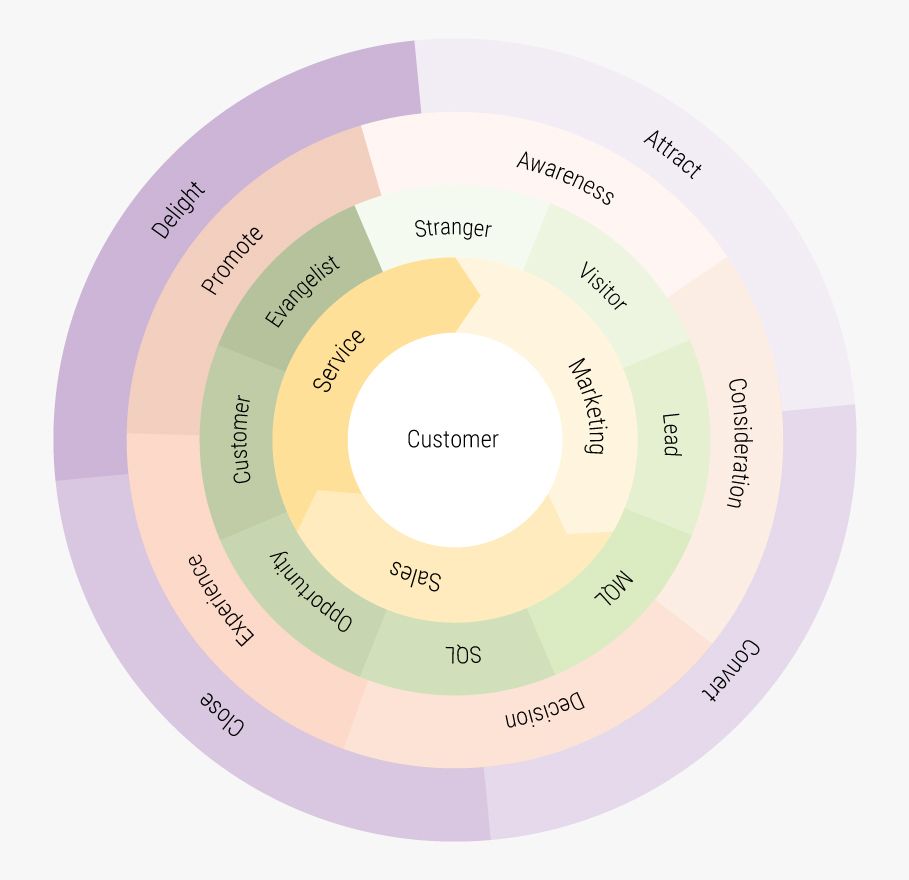Experience journey; create long-term customer relationships

Everyone goes through their own unique journey to purchase, visit or an activity. This 'customer journey' takes a person with their question, problem, need or opportunity for improvement through different stages to you, as the solver. But how do you map out these different stages and what exactly does your target audience encounter? In this blog, we take you through the customer journey and discover how you can better respond to the needs of your target group.
I'm going on a journey and I'm taking along
In an earlier blog, we read about putting the customer first and how you can go beyond the purchase. But before people make a purchase from you, they go through an entire journey in which they encounter different questions, stumbling blocks or opportunities at each stage. This journey is better known as the customer journey, or customer or buyer's journey. Only not every organisation or brand focuses on customers who make a purchase. For example, the travel business focuses on guests, museums on visitors, dentists on patients and so on. That's why we have called this journey the experience journey. Each target group is unique, but everyone ultimately goes for an experience.

This experience journey goes through the same steps as funnels (the funnels visitors go through before a small proportion of them become customers), but seen from the customer's perspective: Awareness, Consideration, Decision, Experience and Promote.

Journey internships
As you can see above, the experience journey can be seen from different perspectives. For example, the top row is seen from the familiar funnel, then you can see the stages from the customer's perspective. The third row shows which stages he then goes through from the organisation's perspective. Finally, you can see which departments belong to which phase of the customer journey.
Within each phase of the experience journey, someone discovers different questions, problems, opportunities or needs. You start by looking at which questions can all arise around your product. For this, you can use different tools:
- Google Suggest: When you search Google for your keywords - the words you want to be found on - Google gives a number of suggestions related to the keyword. These suggestions are based on what other people have searched for.
- Google Trends: Google Trends also shows how popular your keyword is, and what else is being searched for related to your keyword.
- Answer the public: Answer the public is an incredibly useful tool that shows which queries are related to your keyword. These questions are based on previously asked questions in search engines like Google.

Next, you start thinking about which touchpoints (moments a potential customer interacts with your organisation)your target audience has per stage. Where does the insight they have at that stage arise, through which route does someone try to answer their question? These are the touchpoints.

Finally, for each phase, it looks like this:
Within the Awareness phase, a person is aware of a potential problem or opportunity arising.
- Questions: Questions that arise include, for example, "how do I solve X problem?" or "how do I improve Y?".
- Touchpoints: This is where people search social media and search engines like Google for more information in order to get a clearer picture of their problem.
At the Consideration stage, the same person is much more aware of their issue and has clearly defined it.
- Questions: Here, questions such as "what are the best solutions for X?" and "what are the benefits of solution X?" may arise.
- Touchpoints: Because the problem or opportunity is clearly defined, the person starts looking more specifically for a solution. He hits websites, goes to trade shows and subscribes to newsletters to find out more about the company and the solution.
Following in the Decision phase, the person has defined his strategy, method or approach.
- Questions: In this phase, questions such as "what are the terms of delivery of X" and "what is the service of agency X like?" occur.
- Touchpoints: At this stage, the client goes deeper. He knows the different agencies and solutions, and wants to start weighing them up against each other in order to choose the best solution. He does this through 1-to-1 contact, visiting events, going through the website again and reading the newsletters carefully.
After which he deploys this strategy, method or approach in the Experience phase.
- Questions: Within the Experience phase, you get questions like "how do I use X?" and "what support can I use?" .
- Touchpoints: The user starts looking for user guide and support, which can be found in a private online environment.
And in the Promote phase is so enthusiastic about this solution that he wants to tell others about it.
- Questions: The questions here consist of 'how can I reorder X?' and 'where can I find support?'.
- Touchpoints: Finally, the user wants to know more about the solution and this is your chance to provide the best possible service. This service can make or break your business or solution.
So within each phase, there are different questions that you as an organisation can offer the solution to, and which need to be addressed differently at each phase. So you can create unique content at each stage to help your target audience with their journey. You get to work with content mapping. But to create content for your target audience that appeals to each unique persona, it is important to segment your audience and create personas.
Persona
As written above is, of course, the perfect situation. But not everyone goes through the stages of the experience journey in the same way. It is important to keep in mind that each person is unique and thus has their own questions, problems and needs. To know what each segment of your target audience is looking for, you would do well to create a persona.
A persona is a fictional person representative of all or part of your focus audience. You can set up a persona in different ways. For example, you can set it up entirely on the basis of your own knowledge and existing statistics. A handy tool for this is HubSpot's persona tool.
At Sterc, we also compile persona using Myers Bridge Type Indicator (MBTI) and the BSR model. Based on four personality traits, you get insight into someone's behaviour. So you can appeal to emotional people by capitalising on their emotion, and you can show factual people more facts, figures and statistics. This is how you create marketing messages that appeal to everyone. We will discuss this in more detail in another blog.
Content & functionalities mapping
Now that you have a clearer idea of who exactly you are addressing, what his/her behaviours are and where this person is located, you can get started with content mapping. As HubSpot describes it, content mapping is the process of scheduling content in a thoughtful, nuanced way, taking into account these different personas and how aware they are. To this end, we have created our own template so you can get started with content mapping. You can download it here.
Stop selling, start helping
So the experience journey runs concurrently with the previously chosen funnels - the basis of your strategy. But with that, it also runs concurrently with the flywheel, the flywheel that puts the customer at the centre. You notice that all departments work together to help the customer, patient, guest or visitor in the best possible way.
The starting point here is: stop selling, start helping. A sale does not have to take place immediately, or bring in the most money right away. If you work towards a long-term partnership, then in everything to do with your organisation, the customer will immediately think of you and the help you offered him. He will tell all his friends and colleagues about your organisation. And so invested energy need never go to waste.

To show you how the funnels, the flywheel and the experience journey coincide with each other, we have created a more comprehensive model based on HubSpot's flywheel.
Here, the outer ring is the stages of the experience journey seen from the funnels. You attract people to you (attract), get them to convert (convert), create an offer and close the deal (close), finally you turn customers into true promoters (delight), so invested energy is not wasted. A ring inwards is the experience journey from the customer's point of view. The journey we have been talking about in this blog. Another ring inwards are the different stages such a customer goes through before, during and after a purchase, visit or activity is made. Finally, the inner ring shows how the different departments work together to help the customer through the experience journey.

